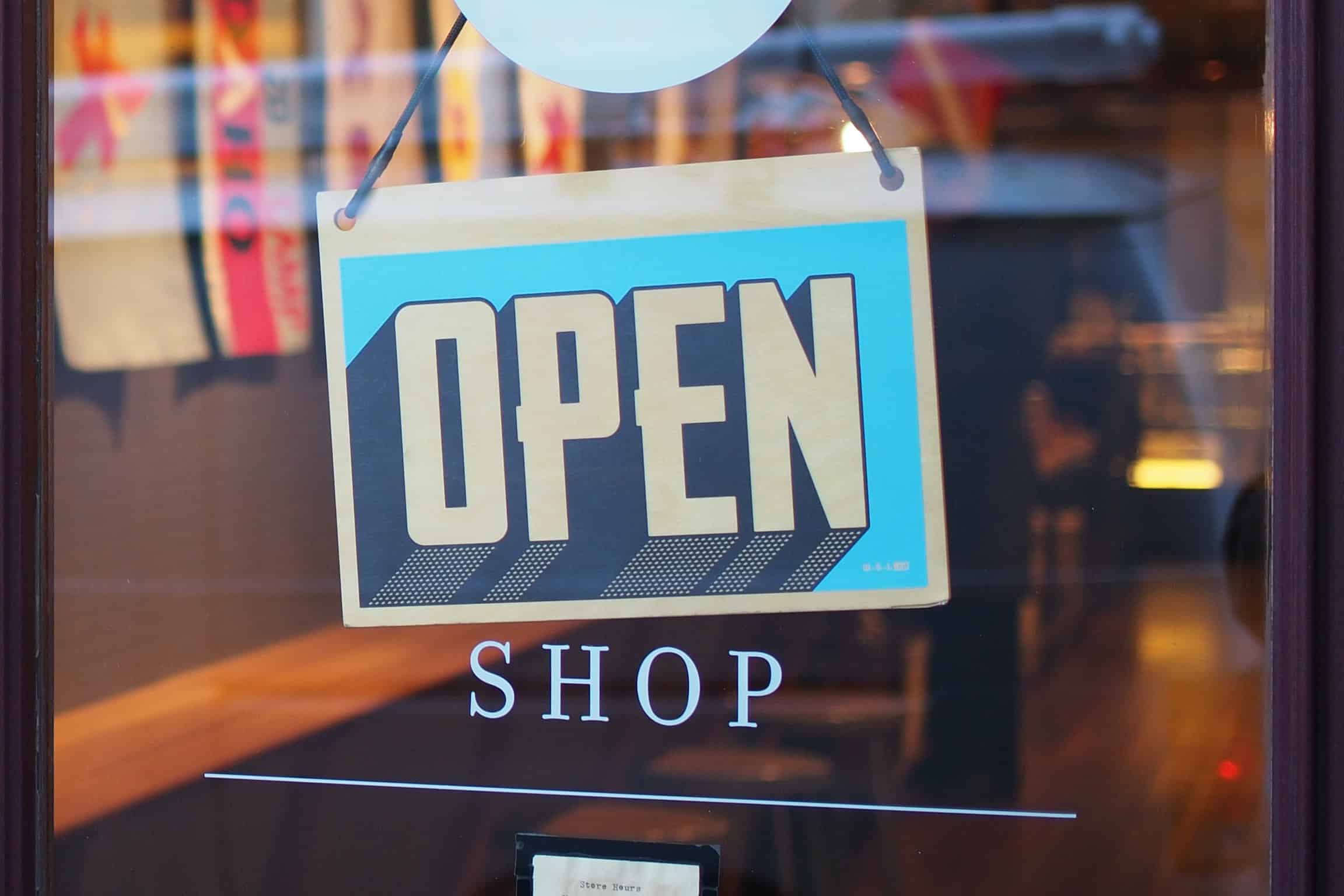
Retail media buy-in: how brands can sell their story and convert conversation to coverage – industry insight from Retail Week
At the end of 2020, Babel held a webinar examining how retailers can maximise share of voice, and how comms and marketing teams can make the most of what is traditionally the busiest time of the year. A lot has changed since then. We might only be a couple of months down the line, but 2021 has already rocked the retail sector. In fact, the only constant that’s remained is the lack of constancy – the uncertainty – that’s dogged the market since the pandemic was declared almost one year ago.
“There’s been five years of change within five weeks.” This, from Retail Week Editor Luke Tugby, in the latest in the series of our #BabelTalks events. Live streamed earlier this week (see it again here), Babel Associate Director – and guru of the retail tech sector – Simon Coughlin, sat down with Tugby to discuss the winning (and losing) strategies brands and marketers have deployed since the pandemic. These strategies straddled a number of areas.
First, the retailer/customer relationship, including how brands have adapted the technology they use to improve both the online and in-store customer experience; how they’re embracing new tech and approaches; and the successes they’re having with technology at the back-end. Second, the retailer/media relationship, including how ecommerce names can best engage with journalists and editors, and the kinds of stories that will really catch a hack’s eye. Finally, Tugby reveals what he predicts to be the biggest trends for retail for the remainder of the year.
Missed the event? You can watch the discussion in full here. Or, you can read on for a condensed report of the in-depth chat.
Who have been the retail winners and losers of the pandemic?
Tugby noted the clear “polarization and distinction between online and offline players.” However, he warned, “it’s lazy to say online has done well and offline has suffered.” He cited specialist retailers like Homebase, B&Q and Pets at Home, which have all performed well and continued to attract shoppers through their doors. There have even been a handful of brands which lack an online presence that have managed to do well – “value players” like Home Bargains and B&M.
There were some common characteristics that united the winners. These are brands that have put people before profit, Tugby explained. They’ve thought about their staff and their customers more than the bottom line. They’ve done good in their community. They’ve donated to charity. It’s not just about financial support though – supporting shoppers with effective communication has also been important. It’s “not been about selling stuff but communicating that we’re here for you in whatever way, shape or form you need us,” said Tugby of the brands who’ve done it right.
He gave the example of grocer Morrisons, which has done a great job of focusing on vulnerable and elderly shoppers. It was one of first to launch a telephone ordering service, for instance, supporting a large number of older customers who had never before used online shopping. Morrisons also launched themed food boxes for customers to celebrate major calendar events at home or as a cost-effective means of getting the essentials they need.
Retailers that have “genuinely listened to their customers and put them first have emerged as winners, and will continue to do so as we come out of the pandemic,” he said. They have had “courage in their convictions in terms of their strategy, and listened to their customers and adapted their proposition and their business model to suit.”
Tugby was hesitant to call out brands that had fared less well. In fact, he commended Primark for not jumping on the digital bandwagon (something which could easily be marked as a no-no), and for “sticking to their guns” as a bricks-and-mortar only business. One retailer which didn’t quite read the room though, was Ted Baker. Tugby contrasted the high-end high street name with Asos: Asos pushed into loungewear really quicky at the start of tech pandemic, appealing to those WFH. If you go onto the website of Ted Baker, Tugby continued, and look at their idea of casual wear – “it’s a £99 jumper” way out of reach of many shoppers during this period.
The past year has seen a wave of lockdowns hitting the high street to varying degrees. How has technology been used by retailers?
The role of technology in combining physical and digital is going to be key, said Tugby. It’s been talked about for a long time, but it’s over the past year – for obvious reasons – that “we’ve seen that accelerate.” He highlighted retailers like HM and Zara, both of which have invested heavily in technology, not only at the front-end for shoppers, but at the back-end for staff.
Inventory management is an important part of this, he said. Visibility into where stock is at any one time will support massively with online orders. Tugby used the example of a brand being able to fulfil an order from a store that’s only two or three miles from a customer’s home versus a distribution centre that’s 30 miles away. That can be “game-changing” for a business.
Inventory management solutions can really help boost a bricks-and-mortar business. “The key is making sure it’s not just tech for tech’s sake,” said Tugby. Instead, any investments must be in “technology that will genuinely either help at the back-end and improve efficiencies for retailers and their workforces, or make a real difference to the customer journey.”
So retailers, ask yourselves: does your potential tech investment make things more convenient, quicker, safer? If the answer is no, then do you really need it? “I think that’s the big question retailers that will be asking themselves.”
We’ve seen VR and AR used in visions of the ‘store of the future’. How far off are we from seeing this on the UK high street?
Here, it’d probably do retailers well to consider again Tugby’s warning on “tech for tech’s sake.” However cool and futuristic the tech, retailers need to invest in something that’ll genuinely help customers. “The [majority of the] examples of those [VR/AR technologies] I’ve seen,” said Tugby, are “not aiding the customer and making the journey easier.”
He gave the example of Asda’s foray into 3D holograms in its store in Stevenage. In the trial, projectors displayed holographic images promoting products or explanations of how to use its scan and go service. “When you’re picking up your can of beans are you really going to stop and stare at a hologram?” Tugby asked. I think the event’s audience and this blog’s readers will agree on the answer there…
Aside from some good uses of VR and AR – Tugby mentioned Ikea’s Point and Place app – he admitted to not seeing “many examples in UK stores where I think, that’s AR or VR being used to really good effect, to genuinely help the customer.”
In that case, what types of tech will be used in stores to enhance customer experience?
Combining the physical and digital is going to be really key, explained Tugby. He praises Dixons Carphone Warehouse and it’s Shoplive video service, which aims to give customers ‘an in-store experience from their own homes via video link with Currys PC World experts.’ If you’re spending a three- or four-figure sum you want to be able to have real advice and reassurance, he said.
Linking the online and offline spaces will be important, allowing retailers to deliver a true omnichannel experience. Digital screens for placing orders will become more widespread, alongside a reinvention of the function of the traditional store space. “Something I think we’ll increasingly see more of is less stock within actual stores.” Instead, they’ll be used “more as showroom type spaces – places to engage with customers, interact with customers, build your brand.”
Fintechs like the aforementioned Klarna may also venture into the physical retail realm. Customers will go to till with their phone and be able to buy-now-pay-later in the same way that they’re able to online. “We’re living in a time where retailers want to blend the physical and the digital,” and this is just one part of that blending of worlds to enhance the customer experience.
Customer experience is critical, and tech can be gamer-changer here. However, great customer experience can only be delivered well if a retailer is running its business and managing its staff effectively. “I genuinely think a lot of the game-changing tech is going to be in the back-end where customers don’t even necessarily really see. There’s huge investment at the moment from a lot of retailers going into a lot of their HR type processes.” Tugby gave the example of allowing individual stores to manage their own staff rotas, which “improves efficiency at the back-end and allows store staff to focus on much more improvement tasks: the customer-facing tasks.”
As a result, he said, staff can spend more time with their customers, engaging with them, and giving them the advice they need. “It just makes that whole in-store shopping experience much better from a consumer perspective.”
All helpful words of wisdom for retailers that want to innovate both online and in-store – and, crucially, to provide a cohesive experience joining all of the associated dots. Another part of any retailer’s strategy should be telling its story. There’s no point spending a load of money on new software, applications and devices if no one knows they exist.
So, we quizzed Tugby on how brands can best engage with the media, and use PR and communications to appeal to readers, entice customers and boost business.
We’ll reveal his Tugby’s tips and tricks for getting into the ages of Retail Week – and indeed, for getting your message heard across any retail, business, trade or national title – in part II of this report, landing next week…
In the meantime, if you’re interested in finding out how we do all of the above (and more) for our clients, get in touch.





